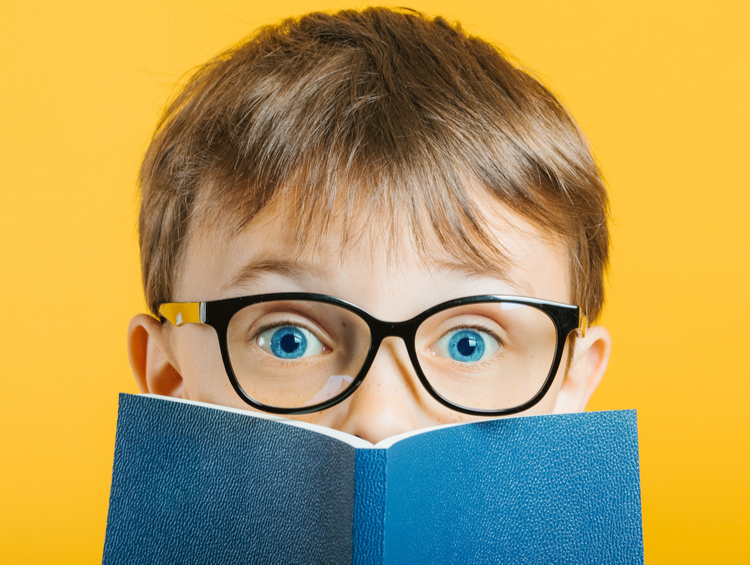
Over recent years, finding ways of slowing down how quickly children become myopic (short-sighted) have become key areas of research. As a planet, we are becoming more myopic every year. At the moment almost a quarter of the world's population are myopic, but this is predicted to increase to over a half in the next 30 years (by then that will be about 5 billion people!).
Not only this, kids are becoming myopic earlier, in 1983 children usually began to become myopic at about 11 years old but by the year 2000 it was 8 years old. This is a problem because the earlier children start to become short-sighted, the quicker they progress and the higher their prescription will eventually be.
While having to wear glasses or contact lenses can be an inconvenience for some, the bigger issue is the fact that being myopic increases your risk of developing certain eye conditions such as retinal detachment and glaucoma.
| Condition | Prescription | |||
|---|---|---|---|---|
| -1.00 | -3.00 | -5.00 | -7.00 | |
| Glaucoma | 2x | 3x | 3x | - |
| Cataract (Posterior Subcapsular) | 2x | 3x | 6x | - |
| Retinal Detachment | 3x | 9x | 22x | 44x |
| Myopic Maculopathy | 2x | 10x | 41x | 127x |
Looking at the table above, even one dioptre of myopia increases your risk of developing some serious eye conditions, and by the time someone reaches -7.00 their risk of retinal detachment is 44x that of someone with no glasses. You can see that even if we reduce their prescription to -5.00, their risk reduces by a half.
To assess your child’s risk of becoming short-sighted, the following link is very useful: https://www.mykidsvision.org/en-us
So what can we do about it?
While we cannot change our genes, we can certainly change the outside factors that have an impact on whether your child will become myopic, and to what extent:
- More green time and less screen time!
A great mantra for reducing the risk of myopia. Spending plenty of time outdoors has been shown to have a benefit in reducing how many children become short-sighted and to what extent. At least 90 minutes outdoors every day is advised. Just don’t forget sun protection, including sun cream, sunglasses and a hat! - Limit how long your child spends working on things close up.
Try to limit your child’s close up hobbies, like iPads, drawing etc., to a minimum (a maximum of 2 hours where possible), and even then they shouldn't hold it too close. As a rule of thumb, the working distance should not be shorter than the length of your child's forearm. You can set their devices to limit the amount of time on close work, and there are specialist apps like MyopiaApp which monitor how long your child is working up close, and how close they are holding their device.
Coopervision MiSight Contact Lenses
We’re pleased to be accredited practitioners for Coopervision MiSight, a specialist contact lens that is proven to slow the progress of myopia. Not only do they correct your child’s vision so that they can see clearly throughout the day, but they also have a special optical design that helps slows down the progression of their myopia. They can be worn by children as young as 6-years old, and we will make sure they are totally confident in applying and removing their lenses and how to look after them before taking them away. The study that looked at how effective these lenses are had feedback from parents that only very rarely did they have to remind or help their children remove the lenses. On top of this 9/10 kids say they prefer wearing the lenses to glasses!
How effective are they?
MiSight contact lenses have been the subject of a 3-year long study comparing the specialist lens with a standard contact lens in children between 8 and 12-years old. The study found that wearing the lenses for 10 hours a day, 6 days a week slowed down myopia progression by 59%, with no serious complications reported in any of the children across the three years.
Are they safe?
Because these lenses are single-use and sterile in their packaging, the risk of infection is low. In fact, evidence suggests that the risk of some complications is lower in children than adults. We find that children tend to get into good habits and are so keen to carry on wearing the lenses that they care for them very well!
For reassurance, we are always at the other end of the phone, and you can come to see us for any little query as part of our Eyeplan scheme.
Click here for more information on children and contact lenses.
If you have any questions, or if you would like to discuss myopia management for your child, please feel free to give us a call or send us an email.
